The how-to guide for bay parking
In this guide, we’ll explain the difference between forward and reverse bay parking, how to master each, the key reference points to help you, and what to expect on your driving test.
Download our app
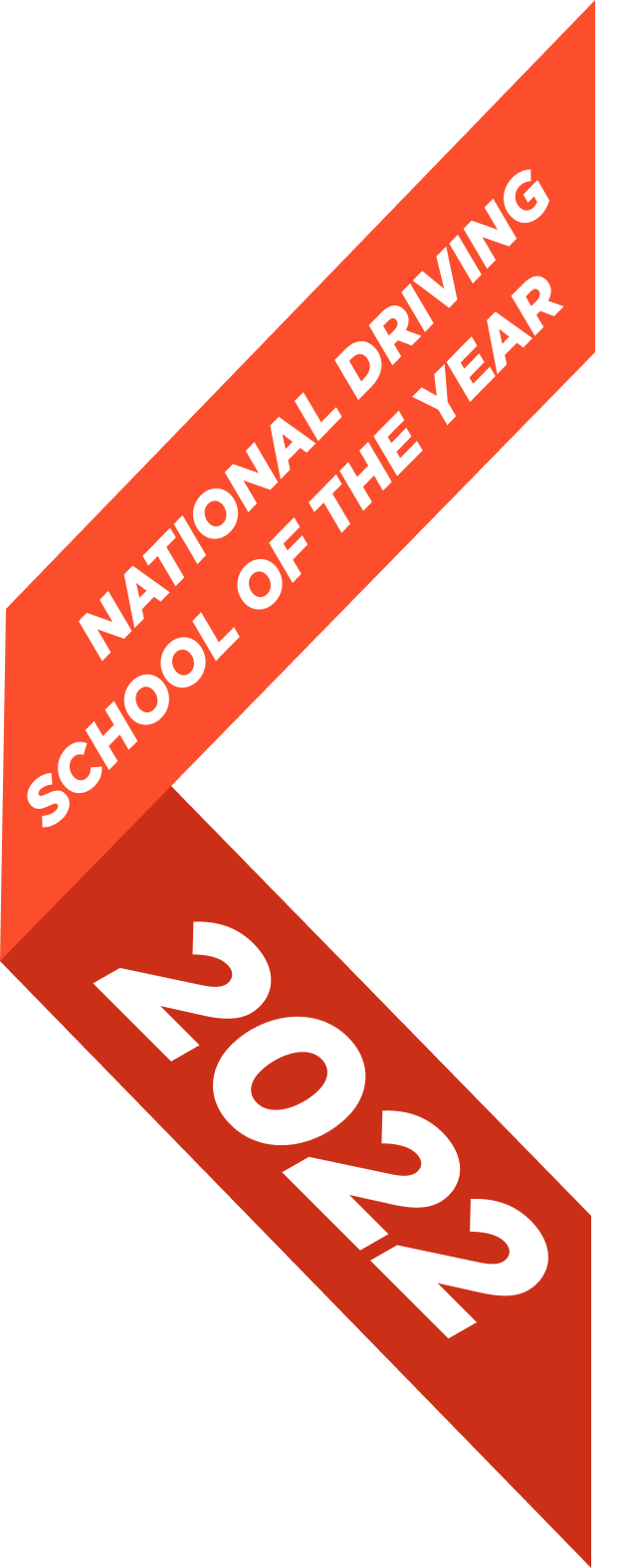

Bay parking is a manoeuvre used to park your vehicle neatly between two lines in a marked parking bay, commonly found in car parks.
Both styles of bay parking are essential, and students can be asked to do these manoeuvres during a driving test. There are two methods: reverse bay parking and forward bay parking.
Reverse bay parking involves reversing into a parking bay. Although it may sound more complicated than parking forward, reversing into a parking bay offers better manoeuvrability and a better view when driving away from the space.
It’s also the preferred method for many experienced drivers and is often considered the safer option when exiting the bay.
Forward bay parking means driving forward into the bay. This method may feel more natural for beginners, but it can make it harder to judge your position and more difficult to reverse out safely.
Drivers may choose to forward bay park over reversing as it is quicker and a preferred option for those who don’t feel confident reversing. It is also useful for carrying items to and from the boot, and you want it to be easily accessible.
Forward parking in a bay is still a necessary skill and one that many drivers use daily, making it a popular parking manoeuvre during driving tests.
Learning how to reverse bay park takes a little practice, but once mastered, it’s a reliable and effective parking manoeuvre. Here’s a step-by-step guide:
Reverse bay parking reference points
Using reverse bay parking reference points helps you position the car accurately. Key reference points include:
Practising these reference points makes reverse bay parking much easier and more consistent. Our Learn To Drive With RED app can help with driving manoeuvres and how to practise.
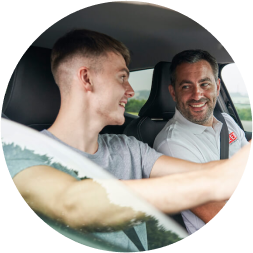
Now, let’s explore how to forward bay park confidently and safely. As mentioned above, forward bay parking may seem more natural, but it can be harder to position and to exit the space you need to reverse out.
Here’s a step-by-step breakdown of how to forward bay park:
The key tip is to take it slow and do multiple mirror checks.
Forward bay parking reference points
Forward bay parking reference points help guide your turning and ensure throughout parking that you are on track:
Knowing how to forward bay park using these reference points can significantly improve accuracy and reduce stress in busy car parks. Our Learn To Drive With RED app can help with driving manoeuvres and how to practise.

If bay parking is part of your practical test, you’ll be asked to either reverse into a bay and drive out, or drive into a bay and reverse out. This may be done at the test centre or a nearby car park.
Your examiner will be looking for:
Remember, it’s not about being perfectly straight – it’s about being safe, observant, and ending up fully in the bay.
Learn To Drive With RED app
You should prepare for bay parking by getting familiar with all the theory and tips that will help complete this maneuverer in the practical test. The Learn to Drive with RED app has practical driving and theory tips to help you get to grips with the questions that could be asked and helpful guidance for your test. You can also track your progress with the learner checklist to make sure you’ve covered all the other areas in your test.
Download the app to keep learning and support on your driving journey.
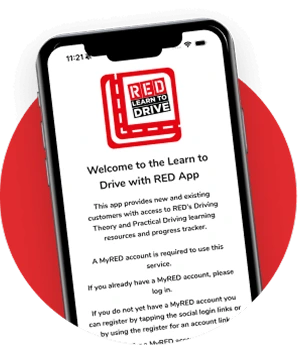
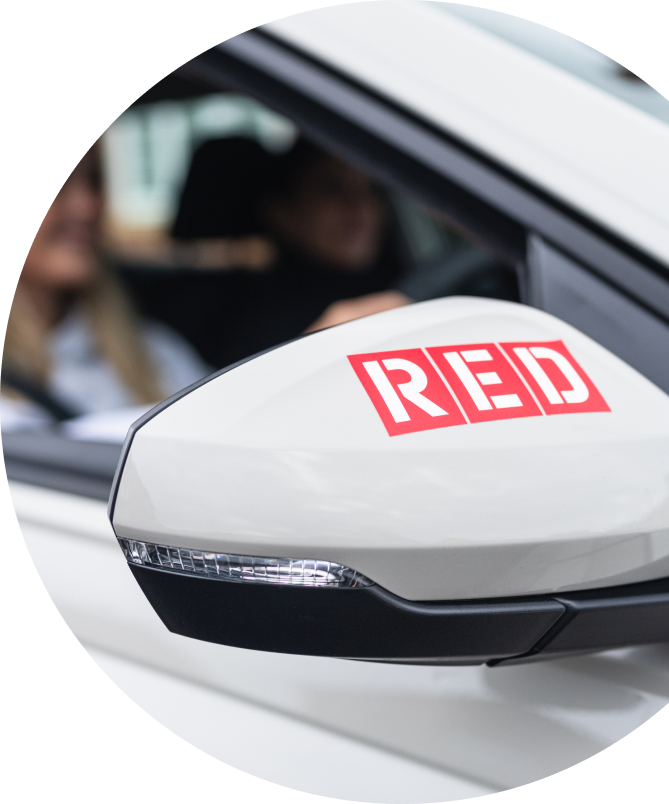
Yes, there is a chance that the examiner will ask you to do a bay parking manoeuvre during a driving test. You’ll only be asked to do one manoeuvre during your test.
You may still pass if it’s only slightly off and doesn’t pose a safety issue. But ideally, aim to be fully between the lines. Remember it is not a test on how straight you can park but on being safe, observant, and ending up in the bay.
This guide provides you with all the useful theory, and the Learn To Drive With RED app provides useful videos to see the process broken down. Practising in quiet car parks outside of busy times will help build confidence.
Make sure you are being supervised by your instructor or an adult (21+ years old) with a full licence for at least 3+ years, and you are in a vehicle with L plates and insured.
Yes, you’re allowed to make corrections. Just remember to check the surroundings and keep safe before moving the vehicle.
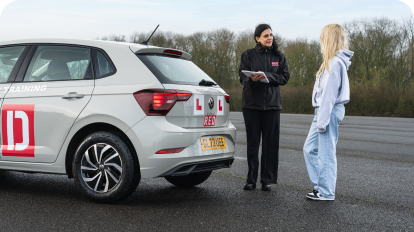
The cornerstone of learning to drive efficiently is being able to monitor and track your progress to test success, and our new app, Learn To Drive With RED, puts learning to drive in the palm of your hand.
Find out more
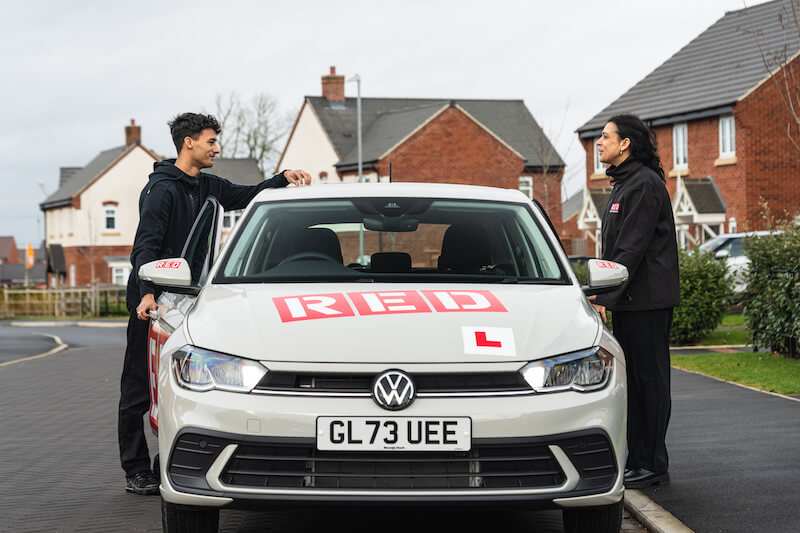
Everything you need to know about the Driving Theory Test and the best ways to practise and pass. Start studying today and pass with confidence!
Read more
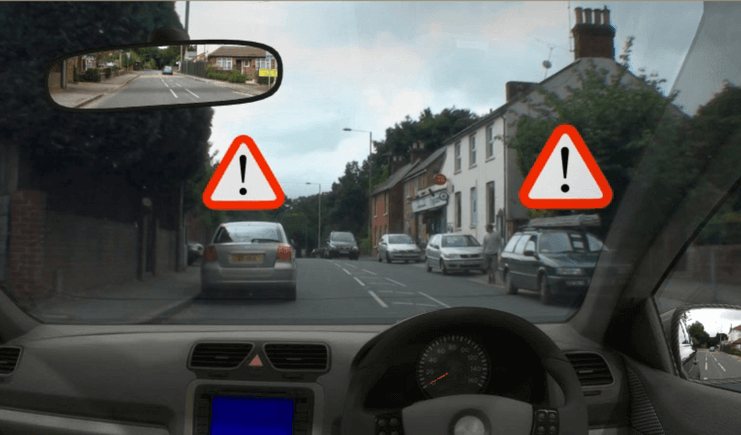
The Hazard Perception Test is crucial to the overall driving theory test, as it is designed to test a candidate's ability to spot and respond to potential hazards while driving. Find out more and start practising today!
Learn more